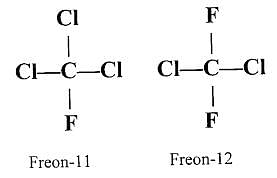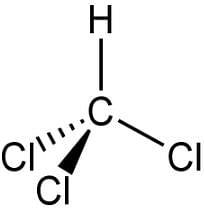NEET Exam > NEET Tests > Daily Test for NEET Preparation > Test: Polyhalogen Compounds (January 27) - NEET MCQ
Test: Polyhalogen Compounds (January 27) - NEET MCQ
Test Description
10 Questions MCQ Test Daily Test for NEET Preparation - Test: Polyhalogen Compounds (January 27)
Test: Polyhalogen Compounds (January 27) for NEET 2025 is part of Daily Test for NEET Preparation preparation. The Test: Polyhalogen Compounds (January 27) questions and answers have been
prepared according to the NEET exam syllabus.The Test: Polyhalogen Compounds (January 27) MCQs are made for NEET 2025 Exam. Find important
definitions, questions, notes, meanings, examples, exercises, MCQs and online tests for Test: Polyhalogen Compounds (January 27) below.
Solutions of Test: Polyhalogen Compounds (January 27) questions in English are available as part of our Daily Test for NEET Preparation for NEET & Test: Polyhalogen Compounds (January 27) solutions in
Hindi for Daily Test for NEET Preparation course. Download more important topics, notes, lectures and mock
test series for NEET Exam by signing up for free. Attempt Test: Polyhalogen Compounds (January 27) | 10 questions in 20 minutes | Mock test for NEET preparation | Free important questions MCQ to study Daily Test for NEET Preparation for NEET Exam | Download free PDF with solutions
Detailed Solution for Test: Polyhalogen Compounds (January 27) - Question 1
Test: Polyhalogen Compounds (January 27) - Question 2
The chloro compound which can be used as fire extinguisher is:
Detailed Solution for Test: Polyhalogen Compounds (January 27) - Question 2
Test: Polyhalogen Compounds (January 27) - Question 3
Which is the correct formula of Freon-12?
Detailed Solution for Test: Polyhalogen Compounds (January 27) - Question 3
Detailed Solution for Test: Polyhalogen Compounds (January 27) - Question 4
Test: Polyhalogen Compounds (January 27) - Question 5
The antiseptic properties of iodoform is due to which of the following:
Detailed Solution for Test: Polyhalogen Compounds (January 27) - Question 5
Test: Polyhalogen Compounds (January 27) - Question 6
Central nervous system can be depressed by the use of which of the following:
Detailed Solution for Test: Polyhalogen Compounds (January 27) - Question 6
Test: Polyhalogen Compounds (January 27) - Question 7
Paul Muller of Geigy Pharmaceuticals in Switzerland discovered the effectiveness of DDT as:
Detailed Solution for Test: Polyhalogen Compounds (January 27) - Question 7
Test: Polyhalogen Compounds (January 27) - Question 8
Which one of the following is the correct formula of methylene dichloride?
Detailed Solution for Test: Polyhalogen Compounds (January 27) - Question 8
Test: Polyhalogen Compounds (January 27) - Question 9
Depletion of Ozone is believed to increase:
Detailed Solution for Test: Polyhalogen Compounds (January 27) - Question 9
Test: Polyhalogen Compounds (January 27) - Question 10
Exposure to lower levels of a compound in air can lead to slightly impaired hearing and vision. Identify the compound.
Detailed Solution for Test: Polyhalogen Compounds (January 27) - Question 10
|
12 docs|366 tests
|
Information about Test: Polyhalogen Compounds (January 27) Page
In this test you can find the Exam questions for Test: Polyhalogen Compounds (January 27) solved & explained in the simplest way possible.
Besides giving Questions and answers for Test: Polyhalogen Compounds (January 27), EduRev gives you an ample number of Online tests for practice















